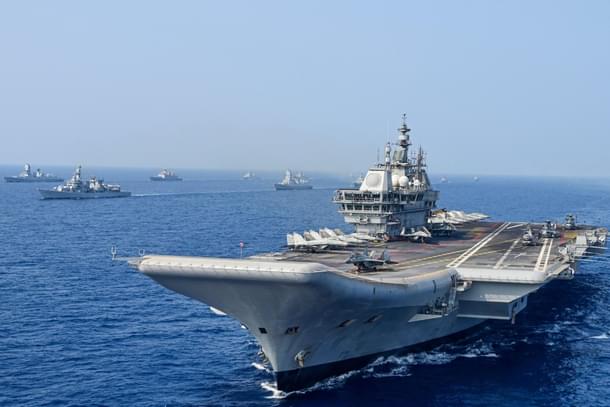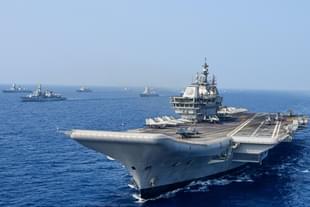News Brief
How Indian Navy Denied Pakistan 'Any Opportunity To Be A Threat In Maritime Space', Vice Admiral Pramod Explains
Nishtha Anushree
May 12, 2025, 04:49 PM | Updated 04:49 PM IST
Save & read from anywhere!
Bookmark stories for easy access on any device or the Swarajya app.


During a press briefing of the DGMOs of the three armed forces on Monday (12 May), Vice Admiral A N Pramod explained how Indian Navy operates as a composite network deal with air, surface and sub-surface threats.
Amalgamation of advanced sensors, synchronised on the combat management systems ensures that Indian Navy conducts persistent surveillance, detection and identification to degrade or neutralise threats, he explained.
Under the umbrella of comprehensive and effective layered fleet air defence mechanism, Indian Navy is able to deal with drones, high-speed missiles or aircraft, both fighters and surveillance, the Vice Admiral added.
"The fleet maintains a surveillance bubble at extended ranges using advanced radars. Any aerial target that attempts to penetrate this bubble is identified. The carrier battle group with its air wing provides the first layer of this mechanism," he explained.
In the current standoff with Pakistan, aircraft career with a large number of Mig 29 fighters and air-borne early warning helicopters did not allow any suspicious or hostile aircraft to come close and they remained 'several hundred kilometres' away.
The vice admiral also highlighted how the anti-missile and anti-aircraft defence technology was validated by the navy after the 22 April Pahalgam attack and how our carrier battle group maintained an uncontested presence in the area of operations.
"Effectively, it compelled the Pakistani air elements to remain bottled up close to the Makran coast, denying any opportunity to be a threat in maritime space... Indian Navy's dominance ensures that we can strike at will," he concluded.
Nishtha Anushree is Senior Sub-editor at Swarajya. She tweets at @nishthaanushree.





